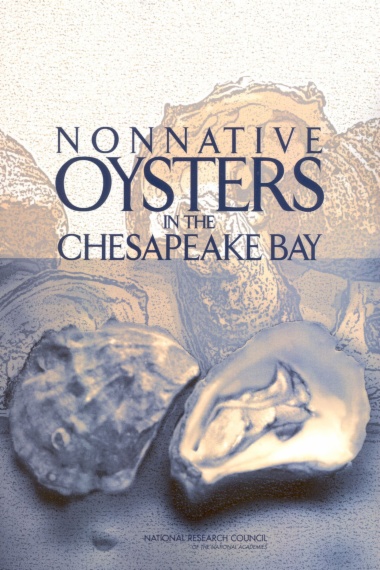Nonnative Oysters in the Chesapeake Bay discusses the proposed plan to offset the dramatic decline in the bay's native oysters by introducing disease-resistant reproductive Suminoe oysters from Asia. It suggests this move should be delayed until more is known about the environmental risks, even though carefully regulated cultivation of sterile Asian oysters in contained areas could help the local industry and researchers. It is also noted that even though these oysters eat the excess algae caused by pollution, it could take decades before there are enough of them to improve water quality.
- Cover
- Front Matter
- 1. Executive Summary
- 2. Introduction and Overview
- 3. Background on Introduced Species
- 4. Oyster Biology
- 5. Social and Economic Value of Oysters in the Chesapeake Bay
- 6. History and Current Status of Restoring Native Oyster Reefs in the Chesapeake Bay
- 7. Oyster Aquaculture
- 8. Regulatory Framework for Managing Proposed Introductions
- 9. Elements of Risk Assessment for the Introduction of <i>Crassostrea Ariakensis</i> in the Chesapeake Bay
- 10. Decisionmaking and Recommendations for Future Research
- References
- Appendix A: Committee and Staff Biographies
- Appendix B: Letter Report to the Virginia Marine Resources Commission
- Appendix C: Acronyms
- Appendix D: State Law Documents
- Appendix E: Federal Law Documents
- Appendix F: International Law Documents
- Appendix G: Chesapeake Bay Program Ad-Hoc Panel Letter and Reports
- Appendix H: Meeting Agenda
- Appendix I: Letters Requesting A Study On Non-native Oysters in the Chesapeake Bay
- Appendix J: Glossary
- Appendix K: Scientific and Common Names

